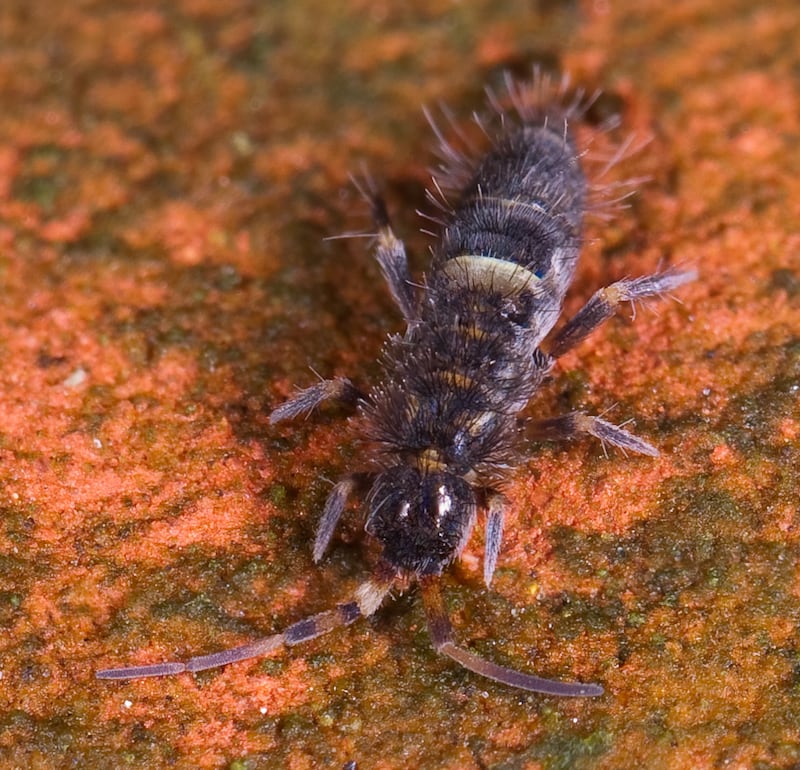 Common springtail, Orchesella cincta (Mvuijlst/Wikimedia Commons)
Common springtail, Orchesella cincta (Mvuijlst/Wikimedia Commons)
In all these many years, I have never written a column on springtails, and yet I am pretty sure you have them all over your yard. In fact, you have more of them than any other arthropod. You probably missed seeing them too.
My problem was I assumed a much larger size for springtails. In fact, they are only about 1/4 inch long, which seems way too small to have an appendage known as a furcula, a tube running underneath its abdomen used for balance and escaping enemies. There are below-ground species as well as above-ground.
This aforementioned furcula is held in place under tension so it can spring open like a catapult and propel the animal away from enemies, hence the moniker “springtails.” Springtails come in different colors; you will probably see only tan-white or black ones.
While I lecture about them as members of the soil food web, I couldn’t honestly say I ever saw one – until the other night while I was sitting at an outdoor table in our backyard. Several tiny specks of movement caught my eye. These specks were a little thicker than a hair on my arm, actually, and a millimeter or two, at most, in length. Collembola! I didn’t realize they have been there all along.
How could I have missed seeing them? After all, springtails exist in tremendous numbers. Populations are estimated to be 100,000 per square meter (about 1.2 square yards). That puts them right up there with nematodes when it comes to a huge population. And there are several genera and species of springtails.
You can find springtails in your tree leaf canopy, in moss, wet logs as well as your lawns and anywhere else that is moist. They are everywhere outdoors.
It isn’t only the warm months that you might see a springtail. There is a whole genus that exists in winter, known as “snow fleas.” These are black.
If you are lucky enough to find some and have a magnifying glass, check out your catch. Their segmented bodies can be quite beautiful. Besides, if they are so plentiful, you should really know what they look like.
Winter or summer, a big problem for springtails is drying out. To help them adapt to drier conditions, they are able to molt into a smaller specimen, which requires less moisture to survive.
Springtails eat fungi, both hyphae as well as spores. Bits get loosely stuck on their bodies. This makes them major spreaders of fungi as they move around the world.
Springtails can also consume pollen, decaying animals, plant material and bacteria. In turn, springtails are the prey of harvestmen, spiders and centipedes.
Springtails can also invade damp areas in your home. The obvious solution if you find them is to eliminate the moisture. This includes springtails in potted plants. You can also spread food-grade diatomaceous earth, sand or spray soil with a vinegar-water mix using a 1-to-1 ratio.
There are plenty of poisons sold to control springtails. Avoid them like COVID-19. Instead, use insecticidal soaps, boric acid or silica gels (ah, an after-use for those little packages).
How do you know you have a problem infestation? You will see them. They are not harmful by themselves. They may be vectors for viruses and diseases, however, so clear plants and areas of the house that harbor them by simply drying things out.
Jeff’s Alaska Garden Calendar
Alaska Botanical Garden: Lots of things to look at. Plus, info on Beer in the Garden, Thursday, Sept. 4, 6-9 p.m.
Harvest.
Start moving things indoors.


Comments are closed.